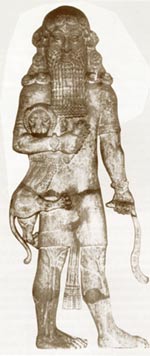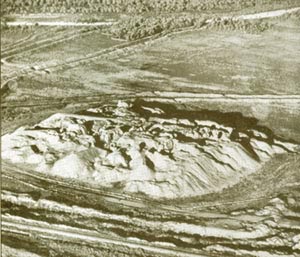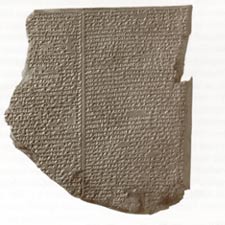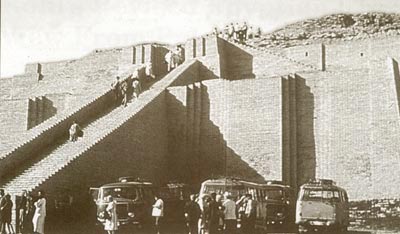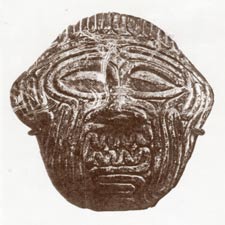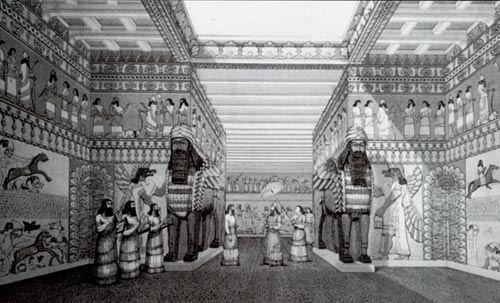Terra Is Truly FirmaAn article in US News & World Report told a marvelous story about "Terra," the super-computer program at Los Alamos, New Mexico, which was designed "to prove that the story of Noah and the flood of Genesis 7:18 . . . happened exactly as the Bible tells it." It seems that John Baumgardner, who designed it, is the world's pre-eminent expert in the design of computer models for geophysical convection, the process by which the earth develops volcanoes, earthquakes, and the movement of the continental plates. He is also a fundamentalist Christian "who believes, in accordance with the Bible, that the earth was created by God less than 10,000 years ago." Terra is an attempt to reconcile the most literal reading of Scripture with the most advanced science in existence. Some time went by after his conversion, before evolutionist Baumgardner gave much thought to the creation of the universe by God. But as his walk with the Lord deepened, he became convinced that "indeed there had been a major catastrophe in the Earth's past that accounts for a large fraction of the geological features we observe at the earth's surface today." And this catastrophe was the Flood of Noah's day. The enormous significance of this is seen, for instance, in that the 100 mile-an-hour runoff of the water covering the earth back into the oceans could easily create the Grand Canyon "in about a week!" Most physicists "believe" the earth is 4.5 billion years old. And the results of Terra, run with that assumption, works out OK. On the other hand, run the program assuming the earth is less than 10,000 years old, and that there was a catastrophic universal Flood, and all the geology works out OK that way also! But, as Baumgardner points out, scientists wrongly take for granted that geology happens consistently, without catastrophes. "If you look at the geological record," he insists, "there are fingerprints of catastrophe everywhere one looks." Details of the Terra program and how it works, as well as more of Baumgardner's evidences for a young earth, make the article well-worth looking up. (US News & World Report, 6/16/97:55-58.) Where Did the 40 Days and Nights of Rain Come From?The answer, or part of it, may be found in a recent theory proved correct. Louis Frank of Iowa University published an article in 1986 postulating that small icy comets continually pelt the earth.Other scientists scoffed at the idea. A leading atmospheric expert argued that no atmospheric expert supported such a thing. Another commented, "If he's correct we'd have to burn half the contents of the libraries in the physical sciences." Well, he IS correct! A report in US News and World Report noted stunning evidence from three cameras on NASA's Polar satellite actually have captured images of comets as big as a house(!) plunging into the atmosphere. Between five and 30 comets hit the upper atmosphere every minute! "The ice becomes water vapor that later comes down as rain." That could be a lot of rain! (US News & World Report, 6/23/97.) Tale of Two Cultures: Ancient Chinese Dynasty Linked to New World's Earliest CivilizationAbroad for the first time in his life, Han Ping Chen, a scholar of ancient Chinese, landed at Dulles International Airport near Washington, D.C., the night of September 18, 1996. The next morning, he paced in front of the National Gallery of Art, waiting for the museum to open so he could visit an Olmec exhibit -- works from Mesoamerica's spectacular "mother culture" that emerged suddenly with no apparent antecedents, 3,200 years ago. After a glance at a 10 ton basalt sculpture of a head, Chen faced the object that prompted his trip: an Olmec sculpture found in La Venta, 10 miles south of the southernmost cove of the Gulf of Mexico.What the Chinese scholar saw was 15 male figures made of serpentine or jade, each about 6 inches tall. Facing them were a taller sandstone figure and six upright, polished, jade blades called celts. The celts bore incised markings, some of them faded. Proceeding from right to left, Chen scrutinized the markings silently, grimacing when he was unable to make out more than a few squiggles on the second and third celts. But the lower half of the fourth blade made him jump. "I can read this easily," he shouted. "Clearly, these are Chinese characters." For years, scholars have waged a passionate debate over whether Asian refugees or adventurers might somehow have made their way to the New World long before Columbus, stimulating brilliant achievements in cosmogony, art, astronomy and architecture in a succession of cultures from the Olmec to the Mayan and Aztec. On one side are the "diffusionists," who have compiled a long list of links between Asian and Mesoamerican cultures, including similar rules for the Aztec board game of patolli and the Asian pachisi (also known as Parcheesi), a theological focus in ancient China and Mesoamerica on tiger-jaguar and dragonlike creatures, and a custom, common both to China's Shang dynasty and the Olmecs, of putting a jade bead in the mouth of a deceased person. "Nativists," on the other hand, dismiss such theories as ridiculous and argue for the autonomous development of pre-Columbian civilizations. They bristle at the suggestion that indigenous people did not evolve on their own. Striking ResemblancesFor diffusionists, Olmec art offers a tempting arena for speculation. Carbon-dating places the Olmec era between 1000 and 1200 BC, coinciding with the Shang dynasty's fall in China. American archaeologists unearthed the group sculpture in 1955. Looking at the sculpture displayed in the National Gallery, as well as other Olmec pieces, some Mexican and American scholars have been struck by the resemblances to Chinese artifacts. In fact, archaeologists initially labeled the first Olmec figures found at the turn of the century as Chinese. Migrations from Asia over the land bridge 10,000 - 15,000 years ago could account for the Chinese features, such as slanted eyes, but not for the stylized mouths and postures peculiar to sophisticated Chinese art that emerged in recent millennia.Yet, until Chen made his pilgrimage to the museum, no Shang specialist had ever studied the Olmec The scholar emerged from the exhibit with a theory. After the Shang army was routed and the emperor killed, he suggested, some loyalists might have sailed down the Yellow River and taken to the ocean. There, perhaps, they drifted with a current which skirts Japan's coast, heads for California and peters out near Ecuador. Betty Meggers, a senior Smithsonian archaeologist who has linked Ecuadorian pottery to 5,000 year old ship wrecked Japanese pottery, says such an idea is "plausible" because ancient Asian mariners were far more proficient than given credit for. But Chen's identification of the celt markings sharpens the controversy over origins even further. For example, Mesoamericanist Michael Coe at Yale University labels Chen's search for Chinese characters as insulting to the indigenous people of Mexico. There are only about a dozen experts worldwide in the Shang script, which is largely unrecognizable to readers of modern Chinese. When Prof. Mike Xu, a professor of Chinese history at the University of Central Oklahoma, traveled to Beijing to ask Chen to examine his index of 146 markings from pre-Columbian objects, Chen refused, saying he had no interest in anything outside China. He relented only after a colleague familiar with Xu's work insisted that Chen, as China's leading authority, take a look. He did and found that all but three of Xu's markings could have come from China. Xu was at Chen's side in the National Gallery when the Shang scholar read the text on the Olmec celt in Chinese and translated: "The ruler and his chieftains establish the foundation for a kingdom." Chen located each of the characters on the celt in three well-worn Chinese dictionaries he had with him. Two adjacent characters are usually read as "master and subjects," but Chen decided that in this context they might mean "ruler and his chieftains." The character on the line below he recognized as the symbol for "kingdom" or "country" -- two peaks for hills, a curving line underneath for river. The next character, Chen said, suggests a bird but means "waterfall" completing the description. The bottom character he read as "foundation" or "establish," implying the act of founding something important. If Chen is right, the celts not only offer the earliest writing in the New World, but mark the birth of a Chinese settlement more than 3,000 years ago. At lunch the next day, Chen said he was awake all night thinking about the sculpture. He talked about how he had studied Chinese script at age 5, tutored by his father, the director of the national archives. But Chen's father did not live to enjoy the honors the son reaped, such as a recent assignment to compile a new dictionary of characters used by the earliest dynasties -- the first update since one commissioned by a Han emperor 2,000 years ago. Color NuancesChen was so taken with the Olmec sculpture that he ventured beyond scholarly caution. The group sculpture, he said, might memorialize "a historic event," either a blessing sought from ancestors or the act of founding a new kingdom or both. He was mesmerized by the tallest figure in the sculpture -- made from red sandstone as porous as a sponge, in contrast to the others, which are highly polished and green-blue in hue. Red suggests higher status, Chen said. Perhaps the figure was the master of the group, a venerated ancestral spirit. The two dark blue figures to the right might represent the top noblemen, more important than the two others, carved out of pale green serpentine.The Smithsonian's Meggers says that Chen's analysis of the colors makes sense. But his reading of the text is the clincher. "Writing systems are too arbitrary and complex. They cannot be independently reinvented." More than 5,000 Shang characters have survived, Chen says even though the soldiers who defeated the Shang forces murdered the scholars and burned or buried any object with writing on it. In a recent excavation in the Shang capital of Anyang, archaeologists have found a buried library of turtle shells covered with characters. And at the entrance lay the skeleton of the librarian, stabbed in the back and clutching some writings to his breast. The Olmec sculpture was buried under white sand topped with alternate layers of brown and reddish-brown sand. Perhaps it was hidden to save it from the kind of rage that sought to wipe out the Shang and their memory. (U.S. News & World Report, 11/4/96.) Why This is Important
|
....
Taken from: http://davelivingston.com/postfloodciv.htm


